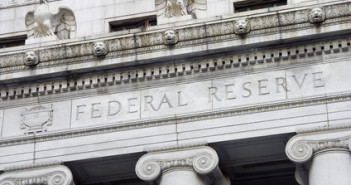Ben Bernanke’s speech at Jackson Hole at the end of August was somewhat vague, a common practice of the Federal Reserve. Many found hints for QE3 in the upcoming FOMC Meeting on September 12-13th. In addition, weak Non-Farm Payrolls led many participants to see QE3 coming now.
Expectations are very high once again, a situation which could lead to disappointment, as the Fed has other tools. Any decision that the Fed makes in the middle of the month will have a strong effect on all currencies until the end of the month and beyond.
Well, really – Fed Announces QE3: $40 Billion in MBS, Open Ended, Low Rates Through 2015
More: EUR/USD is flirting with uptrend support ahead of the Fed
The meeting minutes from the July 31st-August 1st meeting were very dovish, especially as many members wanted more monetary stimulus “fairly soon”. Since then, some economic indicators have improved. Retail sales rose, housing indicators such as building permits and news home sales were on the rise, and a positive sign was also seen in the weak manufacturing sector: Markit’s PMI rose.
Jobs, jobs, jobs
Most notably, the US gained 163K jobs in July, later revised to 141K. In the Jackson Hole speech, one of the less vague expressions heard from Bernanke was the reference to employment as “grave”. So, employment remains the key.
Recent weekly jobless claims numbers have been OK: lower than those in the second quarter of 2012, but still not good as at the beginning of the year. The Non-Farm Payrolls report of September 7th is highly important. The weak outcome in the job gains, only 96K, was only partially balanced with a drop in the unemployment rate to 8.1%. But is this bad enough?
FOMC member Dennis Lockhart already said that the meeting minutes are “stale” after the recent positive signs. Non-Farm Payrolls for August will not be stale when the FOMC meets.
Will QE3 really help?
With yields at record low levels, the effectiveness of more printing and bond buying is questionable. Yields continued falling well after QE2 ended in June 2011. One of the reasons was the threat of more QE – many investors bought bonds in anticipation of the Fed following up and buying these bonds from them. Other investors followed, and the yields remained low even as the Fed didn’t budge.
In fact, the Fed’s balance sheet actually shrank recently – not exactly QEish.
European situation
One of the things potentially weighing on the US economy is the situation in Europe. It’s important to note the calendar: the Fed begins the meeting after the German constitutional court will present its verdict.
If the judges in Karlsruhe reject the ESM, there is a far greater chance that the Fed will act. An expected approval will lower the pressure off Bernanke.
Update: As expected, the German constitutional court approved the ESM. The chances of Bernanke acting on this background is somewhat lower.
Deflation / Inflation
The motivation for QE2 was to prevent deflation – a situation where prices are falling, consumers stop buying in anticipation of more falls, prices continue falling, etc. The Fed cares about core inflation, which is slowing down, but still doesn’t look deflationary. However, there is a danger that headline inflation will rise due to droughts in the US and rises in oil prices. QE2 certainly pushed commodity prices higher. Another boost in already rising prices could be counterproductive, as it will leave less money in the pockets of Americans.
Politics not a serious consideration
There is a strong backlash against Bernanke in the Republican camp, and the political noise is becoming louder towards the elections. Bernanke, a registered Republican, isn’t likely to take this too seriously as a consideration against QE3. If Bernanke and the FOMC will come to a conclusion that QE3 will help, they will act, ignoring politics. The bigger question is: will it help?
It’s also important to remember that QE3 will push commodity prices higher, hurting incumbent Obama. So, Bernanke can either anger both parties or not anger either.
If the Fed opts for QE3 now, with yields at such low levels, one can suspect that it is trying to inflate debt away.
What can the Fed do apart from QE3?
Another option is to extend the guidance regarding interest rates. The Fed currently has a conditional pledge to keep rates low until “late 2014”. The pledge was introduced in the summer of 2011 and was up to “mid 2013”. The extension came in January.
Is it time for another extension? There were some very subtle hints about it in Jackson Hole. So, this option is on the table. With positive news from Europe and a solid jobs report, this option could be used as a good compromise between hawks and doves.
How are hawks and doves split?
There are members who want open ended QE: Rosengren and Evans are the most dovish ones, and also Williams leans towards the doves and Bernanke is a known dove. Lacker is quite hawkish and he is not alone. A lot depends on James Bullard, but it’s hard to tell at the moment.
Goldman Sachs sees QE3 only at the turn of the year, and this analysis makes more sense than QE3 now.
An unconventional policy option that is not on the cards is an opposite tactic: threatening higher rates in a set date, in order to encourage lending now. This “only today” is unconventional and isn’t likely, but it’s just another idea.
Bottom line: Assuming the jobs report is OK and the judges in Karlsruhe don’t surprise, a compromise of an extended guidance seems more likely than outright QE3.
This is an adapted version of this topic from the forex monthly outlook. You can download the full report by joining the mailing list below.
